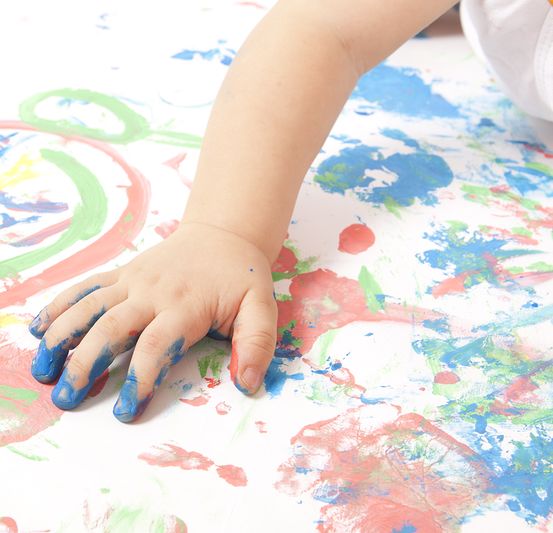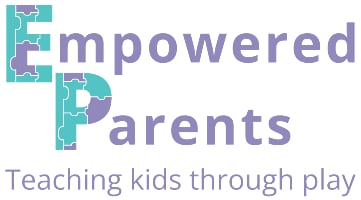Children begin using their hands from an early age. Through practical handling of objects, they begin to experience the world around them.
Hands-on learning is vital in childhood as it helps young children develop skills informally before starting formal education.
Let’s explore the importance of hands-on learning for preschoolers and some simple activity ideas.
What is Hands-On Learning?
Hands-on learning is simply learning by doing.
This learning process takes place through action. The brain is stimulated in multiple areas through practical learning experiences.
Hands-on activities encourage children to learn through exploration. It also helps to develop thinking skills.
The senses are engaged through physical participation in learning. Children use their seven senses to understand their world and engage with various learning styles.

Hands-on learning enhances fine motor skills and allows children to learn from their mistakes. It offers real opportunities for children to experiment and learn about the world through play.
Examples of Hands-On Learning Activities
Here are some activities that encourage a hands-on approach:
- Playdough
- Building blocks
- Sand or sensory trays
- Water play
- Obstacle courses
The Three Learning Styles
These are the three main ways children learn, by taking information in through their senses:
1. Visual Learning
Visual learners prefer to look at things to inspire learning. They often have a strong ability to concentrate on activities.
They enjoy looking at picture books.
Visual learners enjoy colours and shapes. Playing with patterns and sorting shapes is part of their learning process.
2. Auditory Learning
Auditory learners enjoy listening and talking. They enjoy music, rhymes and having stories read aloud to them.
They also prefer verbal praise.
Auditory learners may lose focus easily as they are often distracted by surrounding sounds.
3. Kinesthetic Learning
Kinesthetic learners love to be involved. Physical interaction is an important part of this learning style.
Touching, feeling and working with things by manipulating them are important to a child with a kinesthetic learning style.
These learners like to try things out and be directly involved in what they learn. They need the stimulation of being a physical part of their learning, trying out new things and interacting through a hands-on approach.
The Benefits of Hands-On Learning
What is the importance of hands-on learning for preschoolers?
Hands-on learning is the natural way preschoolers learn. When the hands are busy, the brain is active.
Here are some reasons hands-on learning is so vital for early childhood development.
- Hands-on learning stimulates growth of the brain. The right side is stimulated through visual stimuli, creativity and using the imagination; the left side through problem solving, spatial awareness, sorting and organizing.
- Hands-on learning encourages multi-tasking through listening, speaking, touching and using the senses to explore the environment.
- Hands-on learning engages children in problem-solving strategies.
- It allows young children to interact with learning materials and learn through practical experience, including making mistakes. Valuable learning takes place through making mistakes.
- Hands-on learning is more realistic and less abstract for young learners.
- It helps develop critical thinking skills and creates opportunities to use all seven senses. It is a practical approach to learning.
- Hands-on learning is an excellent way to improve fine motor skills.
Albert Einstein said:
‘Education is not the learning of facts, but the training of the mind to think.’
How to Encourage Hands-On Learning
Any activity involving the use of hands, or of a practical nature, is going to stimulate learning.
Messy play creates opportunities for children to explore water, sand, dough, and building blocks.

Shopping for toys and games becomes more selective for parents and teachers wanting to create hands-on learning activities. Look for toys that encourage building, sorting, pattern making and other practical activities.
Parents can create an area of the house where it is possible to set up a sensory tray or table. A sensory table encourages exploration of texture and shape. Classrooms can also have sensory stations set up.
Using items like toilet rolls, cardboard boxes and other creative waste to make things could be part of this designated area.
Learning about nature and enjoying walks in the park stimulates an interest in the outdoors.
Take time to point out different things on a nature walk. Collecting interesting objects along the way encourages learning about the natural world.
Allow children to bake, lay the table, help with chores, and learn to measure and count by being part of activities at home.
Children love to be involved. Home and school environments offer many learning opportunities.
7 Hands-on Activities for Preschoolers
The following hands-on activities are easy to plan and implement.
1. Baking
Many simple cookie dough recipes are ideal for children to bake biscuits.
Weighing, mixing, cutting with cookie cutters, spreading icing and decorating the finished product are all part of learning to bake and being involved in the kitchen.

2. Gardening
Sowing seeds, watering them and watching them grow is a wonderful way to help children appreciate nature.
This can be a potted plant exercise or a patch of the garden they call their own to grow things in.
3. Playing with Blocks
Wooden blocks provide a variety of learning opportunities. Sorting, stacking, creating patterns, and learning about balance are some of the activities with building blocks.
Lego is suitable for this, but only for children who no longer put objects in their mouths.
4. Art Activities
Finger painting, potato printing or stamping activities are messy, but typical hands-on art activities. Playdough and clay modelling are perfect for strengthening the muscles in little fingers.

5. Create an Obstacle Course
This could be a simple outdoor activity using car tyres to climb over and hoops to climb through; bean bags to toss into buckets and beacons to run around.
Organize family races or timed competitions using outdoor spaces. Add some Hopscotch to your outdoor activities.
Here are a few simple obstacle course ideas.
6. Scavenger Hunts
Collecting things is always fun. Send the children off with a bag or a bucket to collect different things outside or inside. Draw pictures of the items to collect.

Have a colour hunt and get the children to collect items in different colours. For example, something red, blue, green and so on.
7. Water Experimentation
Allow children to pour, measure and play with water. Play with different containers during bath time and provide helpful hands-on experiences with water.
Hands-on learning combines the use of the senses and the important concept of learning through play. This method of learning challenges the brain into thinking and solving problems.
A key benefit of hands-on learning is that it supports all three learning styles. It fosters the early development of both brain hemispheres, enhances neural pathways, and supports the development of young minds in the early stages of learning.
Hands-on learning is an ideal approach for children’s education.

